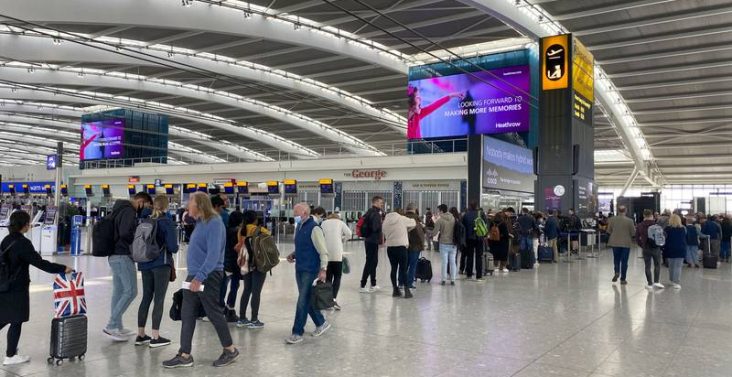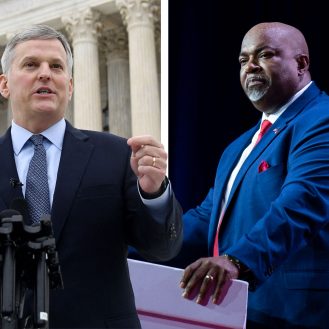The Biden administration has outlined how it could dramatically expand the public lands available to streamline solar development in the Western U.S., a major step that could help sustain the surge in solar energy projects across the country.
The Bureau of Land Management last week released a proposal to update its 2012 Western Solar Plan detailing multiple programs that could ease the permitting process for utility-scale solar projects. The proposal identifies the land best suited for large solar developments across 11 states, balancing conservation with the needs of the industry. It’s the latest in a series of moves poised to change how the nation’s 245 million acres of public land are managed by shifting their use away from fossil fuel production to the development of clean energy and ensuring conservation is on an equal footing as other uses of the land.
“Public lands have to play an integral part in America’s energy transition and the only way that happens is with good planning,” said Aaron Weiss, deputy director of the Center for Western Priorities. “That’s what this solar plan is.”
Solar industry groups have touted the proposal as a major step to streamlining the construction of more solar projects on public lands and giving solar equal footing with other industries that have long relied on public lands, like the oil and gas industry. The updated plan has also earned the support of some environmental and public land advocacy groups.
Finding common ground between industry needs and local communities and environmentalists has been a challenge for decades, with many clean energy projects proposed on public lands running into pushback from local communities and conservationists over concerns over water resources and environmental degradation.
Under the new solar plan, each of the 11 states’ resource management plans—which serve as blueprints over how their public lands are managed—would be updated “to facilitate solar energy development on public lands while avoiding resource conflicts,” giving developers the flexibility to adjust their plans as needed, according to the environmental impact statement included with the proposal released last week.
But some academics and environmentalists say the plan goes too far in allowing the development of undisturbed lands across the Western U.S.—rather than agricultural land or rooftops—and prioritizes industry concerns over threats to the environment.
“I worry that there’s not enough interest in protecting ecosystems in general, but particularly desert ecosystems,” said Dustin Mulvaney, a professor in environmental studies at San Jose State University whose research focuses on sustainable and just transitions to solar power.
Time still remains to modify the changes. The final rule for the updated Western Solar Plan is expected to come later this year, with the public comment period remaining open until April 18.
Conservation and solar development are not mutually exclusive, Weiss said.
“This is not an either-or situation,” he said. “This is not a zero-sum game where one wins and one loses. This is saying we can do all of this together at the same time.”
What the Plan Does
The 2012 plan—which included Arizona, California, Colorado, Nevada, New Mexico and Utah—created three designations for federal public lands: 285,000 acres of “solar energy zones” where development of the resource is prioritized; 19.3 million acres of land that the BLM will consider for solar projects if developers apply to build on them; and 78.6 million acres completely excluded from solar development.
The update will add five new states—Idaho, Montana, Oregon, Washington and Wyoming—and expand the number of acres available in the states that were part of the agency’s 2012 plan. It also eliminates the original plan’s variance areas the agency didn’t prioritize for solar development but would consider if a developer expressed interest, instead opting to specify areas where solar can be developed and where it can’t.

Under the agency’s preferred plan, 22 million acres of public land within 10 miles of transmission lines across the 11 states would be prioritized for solar development. Though the plan opens up public lands in five new states for solar development, data from the BLM show most of the available lands would remain in the states that were part of the original Western Solar Plan, all of them in the desert Southwest.
“Having the transmission lines and substations needed to store and send the solar energy to cities is one of the biggest bottlenecks for renewable energy development,” said Grace Wu, an assistant professor of environmental studies at the University of California at Santa Barbara who led a study examining how to minimize habitat conflicts when building renewable energy sources.
A study from the Lawrence Berkeley National Laboratory found that more than 10,000 clean energy projects representing 1,350 gigawatts of generation and 680 GW of storage were awaiting approval to connect to a transmission line in 2022.
Wu said that making transmission part of the zoning requirements across BLM lands could help coordinate and streamline the permitting for solar and contain the development to areas where it is easiest to distribute and less damaging to the environment.
Public Lands One Part to Growing Solar
The BLM’s environmental assessment, with help from the National Renewable Energy Laboratory, found that 700,000 acres of federal land will be needed to meet the nation’s renewable energy goals. That lines up with Wu and her colleagues’ research, which found that in the Western U.S., around 500,000 acres would be needed to support the region’s needs, she said. So, while 22 millions acres of land would be available for solar development under the BLM’s preferred plan, not all of that land would be developed.
By 2035, NREL estimates four million acres of land will be needed to continue the expansion of solar generation at the current rate. That will include hundreds of thousands of acres of public land, millions more will come from elsewhere, such as agricultural land, said Mulvaney and Wu.
At most, public lands might account for a quarter of the terrain for solar development, Wu said, while agricultural lands will provide upwards of 50 percent.
Perhaps the biggest role the updated Western Solar Plan will have is testing whether system-wide zoning and land-use planning for renewable energy can better guide where developments occur and speed up the permitting process, Wu said. If the BLM can pull it off successfully, it means states themselves, local communities and maybe even the nation could adopt similar plans across their entire jurisdictions for solar and other renewables.
This story is funded by readers like you.
Our nonprofit newsroom provides award-winning climate coverage free of charge and advertising. We rely on donations from readers like you to keep going. Please donate now to support our work.
Even with reforms, development on public lands, including for solar energy, can result in controversy. While communities can be left out of the conversation when developers propose a project, development on public lands requires a public comment process in which towns, tribes, local residents, businesses and environmental groups can get involved in steering or opposing it, which can result in long permitting processes and high costs.
That issue has been the focus of the work of Mulvaney, the professor in environmental studies at San Jose State University. In one 2019 paper he co-authored, the researchers found that solar projects built on private land, such as former farmland close to transmission lines, were the quickest and cheapest to get permitted.
“The fewer acres on public lands, the less conflict you have,” Mulvaney said. “There are public lands that could be developed probably without much either protests from communities or even ecological concern.” But those lands are sometimes not ideal for development, he said, leading developers to look elsewhere.
The incoming update to the Western Solar Plan is just the first in a series of upcoming rule changes from the BLM that have the potential to reform how the agency regulates public lands.
In the coming months, the agency is expected to finalize rules that would increase the cost to lease public lands for oil and gas drilling and ensure the conservation of land is viewed with equal importance to the needs of industries like ranching and energy development.
“What you’re seeing here is the agency not taking anything for granted,” said Weiss, with the Center for Western Priorities. By finalizing the Western Solar Plan and other public land rules before the end of the year, he said, it ensures that a new president taking office in 2025 could not “just erase the Biden administration’s work with the stroke of a pen.”









